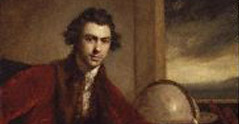|
RENAISSANCE COMMONPLACE BOOKS FROM THE HUNTINGTON LIBRARY
Editorial Introduction by Dr William H. Sherman
The commonplace book was one of the principal means by which the readers, writers, and orators of the English Renaissance managed a rapidly growing body of textual information; and one of the principal tools which guided their compositions, guaranteeing the fullness and order which were the rhetorical ideals of the day.
Although it has a history stretching back to classical antiquity, the commonplace book played its most prominent role in the intellectual culture of Renaissance Humanism. The technique of keeping books in which to enter notable passage, observations and inventions, according to a set of pre-conceived subjects or topics (i.e. loci communes or common places), was a central feature of the pedagogical programme advocated by Erasmus and his contemporaries. Such books were considered a valuable resource for the future needs of the student, providing him or her with an abundance of material, as well as a categorical framework, to apply to a discourse on any subject.
Throughout the sixteenth and seventeenth centuries, the use of commonplace books became increasingly pervasive. In the process, however, they became a less circumscribed phenomenon: they were applied to a broader range of materials, employed in a broader range of social and economic contexts, and structured according to a broader range of techniques. The period has left many collections of texts in which material is selected (often excerpted or abstracted) for later reference and use. But very few of these are organized by commonplaces, like the classic notebooks of Erasmian Humanism. Many are organised by alphabetical or chronological systems, and in the case of poetical and epistolary miscellanies there may not be any system at all.
The influence of commonplace books on the literature of the English Renaissance has itself been a commonplace in modern writing on that culture. Yet, scholars have for the most part restricted their attention to a small number of printed commonplace books - for instance, John Marbeck’s A book of notes and commonplaces…collected and gathered out of the works of diverse singular writers and brought alphabetically into order (London, 1581), John Man’s Commonplaces of Christian Religion (London, 1578), and (best known of all) Ben Jonson’s Timber; or, Discoveries, made upon men and matter, as they have flow’d out of his daily Readings, or had their reflux to his peculiar Notion of the Times (London, 1641). Only in recent years have scholars turned to the rich quarry of manuscript commonplace books, and they have still to come to terms with the variety, brilliance, and quirkiness of the intellectual habits they document.
Renaissance Commonplace Books from the Huntington Library will present, to a broad community of scholars, an extremely valuable sample of such texts. The series will reproduce a wide range of exemplary and extraordinary volumes selected from one of the leading repositories of English Renaissance texts. It will include commonplace books which cover the full spectrum of Renaissance culture, from poetry to politics, and from theology to law. Among the Huntington’s treasures are the exhaustively detailed legal commonplace book prepared by the young Thomas Egerton and used by him as he rose to the positions of Lord Chancellor and Lord Keeper of the Privy Seal; the compilation of the best speeches, poems, and letters of Sir Nicholas Bacon (the Tudor statesman and father to Francis); the devotional commonplace book of Elizabeth Hastings, Countess of Huntington; the notebook and diary of Sir Edward Dering, a number of Tudor and Stuart poetical miscellanies; and a squat little volume which ranges freely over astrological, medical, rhetorical and financial information.
Scholars specialising in any aspect of Renaissance culture will find matter of interest in these volumes. They supply fascinating and crucial evidence regarding the literary tastes and techniques of the English Renaissance - an age when (unlike our own) imitation and borrowing were not only allowed but expected, and when ‘commonplace’ and ‘miscellaneous’ were far from derogatory terms. They provide a window into the intellectual, domestic and professional activities of Tudor and Stuart men and women, from students to ministers of the Crown.
William H Sherman
San Marino, California and Cambridge, England
September 1992
<back
|
|















